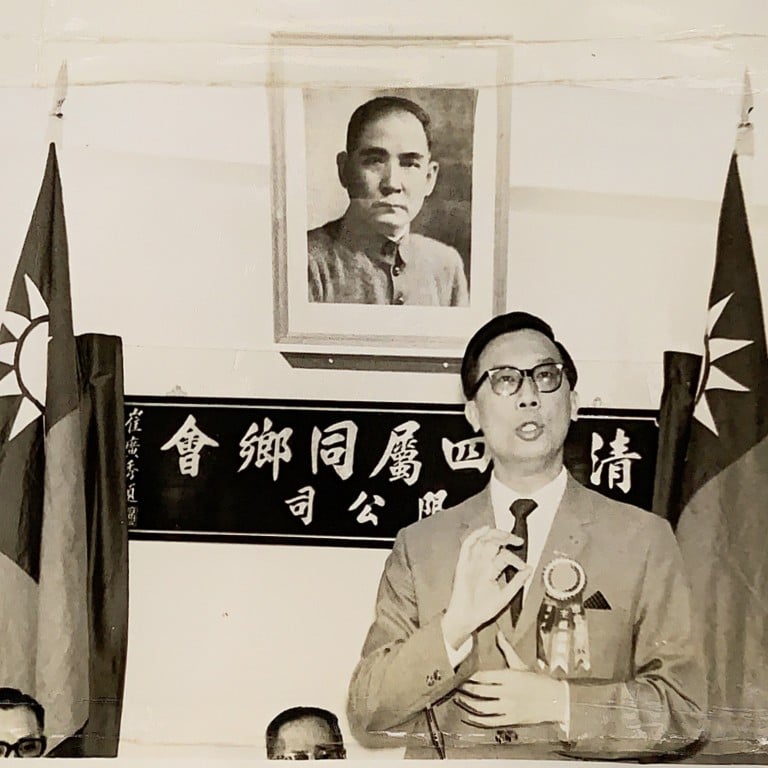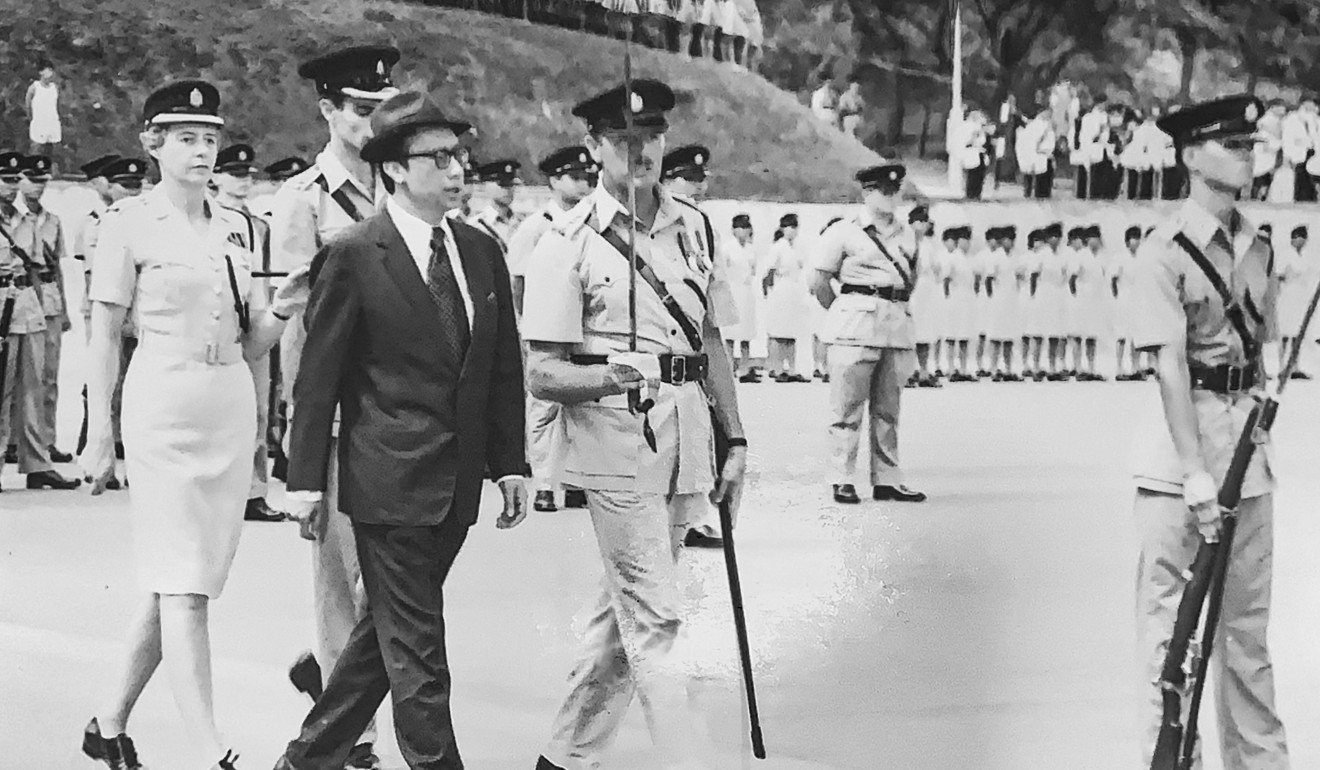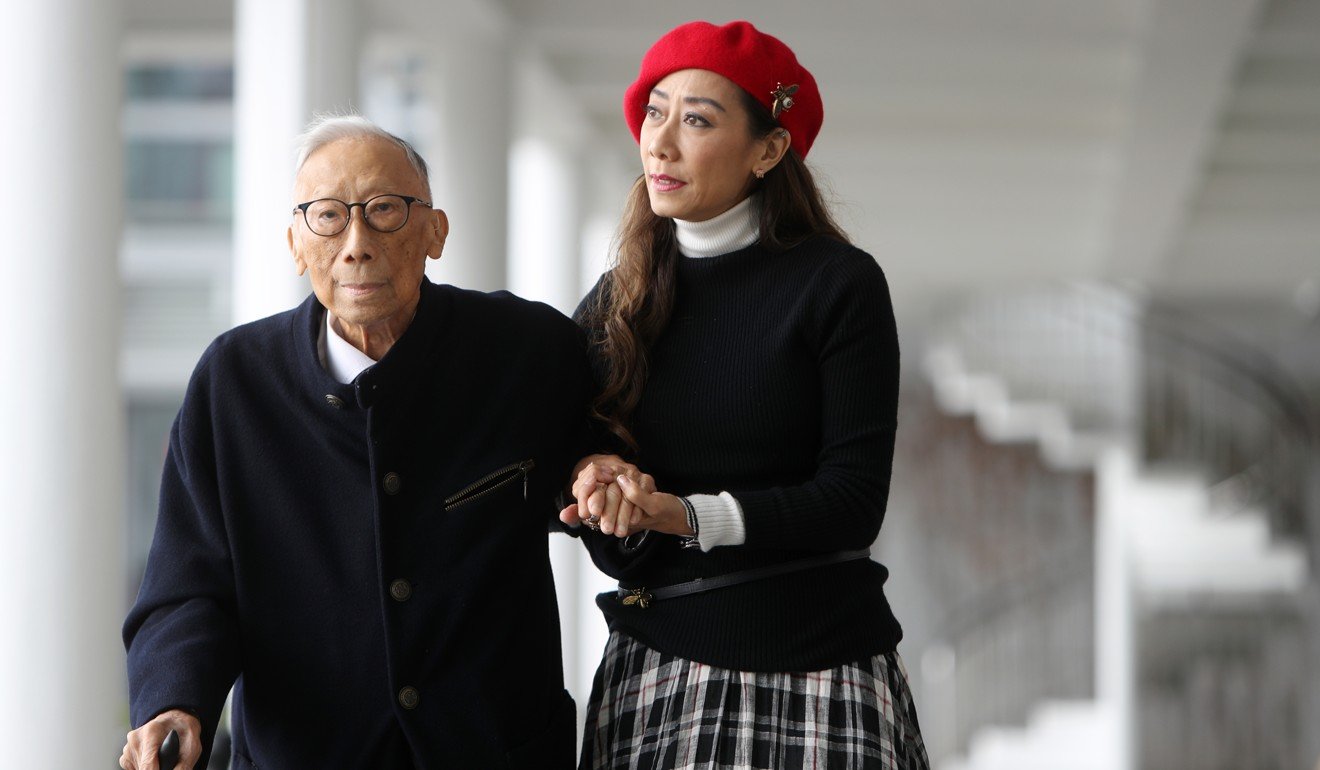
The ‘mayor of Hong Kong’ whose fight for child education forever changed the way the city’s young learn
- Today we continue our series on veteran Hongkongers whose personal history has been interwoven with that of the city since the second world war. In this Lessons from the Past report, Gary Cheung features former chairman of the defunct Urban Council, Hilton Cheong-Leen, who fought for compulsory education and constitutional reform in the 1960s and 1970s
More than 60 years later, Hilton Cheong-Leen still vividly remembers the poor condition of schools on the rooftops of resettlement estate buildings in Shek Kip Mei in Kowloon.
“The sheds was made of metal,” he said. “In the summer, when you walked up, you could feel the heat coming through, and that was the main impression which led me to feel we all must join together to get as many as possible of our young schoolchildren into schools.”
From that moment on education became a top priority for Cheong-Leen, who was elected as a member of the Urban Council – the partially elected municipal council in Hong Kong – in 1957. At the time, urban councillors were the only elected representatives in the colony, while all members of the Legislative Council were appointed.
“Young people should be given an option to move up in life, but they need to have knowledge, and the only way to get knowledge is to be given the opportunity to have a good education, not only at primary level but even beyond that,” Cheong-Leen said.
Shortly after he was appointed to the Legislative Council in 1973, he made a speech advocating nine years of free and compulsory education, something which is taken for granted today. It did have an impact, because it was followed up all the way to Britain’s Foreign and Commonwealth Office. In 1978, the Hong Kong government introduced compulsory education for the first time.
He also called for banning child labour in factories and restaurants in Hong Kong. In a speech delivered at an Urban Council meeting in January 1966, he said: “We are concerned that restaurants are permitted by government to employ young children to work from 6pm to 2.30am as toilet attendants seven days a week, simply because these children can be paid only half what an adult has to be paid.”
I was often dubbed ‘Hong Kong’s mayor’ as I went around meeting folks from different walks of life
Cheong-Leen earned a special titleafter he became the first ethnic Chinese chairman of the Urban Council in 1981. “I was often dubbed ‘Hong Kong’s mayor’ as I went around meeting folks from different walks of life and opening a variety of community activities, such as a painting exhibition and opening of a new business, ” he said.
The financially independent council was responsible for municipal services on Hong Kong Island and Kowloon, including provision of leisure and cultural facilities, and had the power to oversee sanitation and hygiene issues.

Cheong-Leen was born in Georgetown, British Guiana in 1922 to a Chinese immigrant father and came to Hong Kong with his family when he was nine. When Japan invaded Hong Kong in 1941, his family fled to Guilin where he worked for the American consulate.
His family returned to Hong Kong when the war ended in 1945. “One of the first jobs I was offered was with the Post,” he said. “They offered me the chance to become a reporter with a salary of HK$500.”
But his friends suggested he import highly sought-after goods such as stockings, shirts and jackets from the US because he had friends in New York. “I started a business and never looked back,” he said. His company subsequently specialised in importing Swiss watches.
In 1953, Cheong-Leen joined the Hong Kong Junior Chamber of Commerce, an international non-governmental organisation that promoted civic awareness. In that year, he represented the Hong Kong chapter at the group’s conference in San Francisco. He subscribed to the tenet of the chamber that “government should be of laws rather than of men” through his participation in the chamber’s activities.

After returning to Hong Kong, he considered forming a political group to offer the community an alternative platform on political and social development for the city. In October 1954, he co-founded the Hong Kong Civic Association and was elected honorary secretary.
The association is the oldest surviving political group in the city. Among the first things the association did after its establishmentwas to urge the government to abandon its rice monopoly.
“The government had been controlling the distribution of rice. They had stores of rice and that kept the price artificially high,” he said. “This system was out of date and costly. By the time the rice got down to retailers, some of it was stale. The distribution to rice retailers could be done more efficiently by increasing the number of rice importers.
“That’s something we fought for. It took two years but it happened.”
The government subsequently increased the number of authorised rice importers as the first step towards the eventual abolition of the rice monopoly.

Another small successes the association achieved in its early days was its success in persuading the government to distribute thousands of bags of rice freely to teachers whose salary was very low. “That was doing something which people could see that was related to their livelihoods,” Cheong-Leen said.
Apart from his concern for social issues, Cheong-Leen was one of the advocates for constitutional reform in Hong Kong. In 1960, the Civic Association and the Reform Club, founded by liberal-minded barrister Brook Bernacchi in 1949, formed a coalition to fight for constitutional reform.
In the same year, they led a delegation to London to make their case to British officials, but their call was not heeded by the government.
Cheong-Leen served as chairman of the association from 1968 to 2004, and remains its life president. In the 1980s, Cheong-Leen consulted core members of the group about the possibility of renaming the Civic Party.
“But most of them advised against the idea because in those days, many people associated ‘parties’ with triad societies,” he said.

The Civic Party name was eventually taken by Audrey Eu Yuet-mee and fellow barristers when they co-founded the pan-democratic group of the same name in 2006.
The Civic Association had four members serving in Legco in 1987, but it has been supplanted by other political groups since Cheong-Leen decided not to seek re-election as an urban councillor in 1991.
The association has witnessed a steady decline in its membership since the 1990s. It now has about 340 members, compared with more than 5,000 members at its height in the 1970s.
Cheong-Leen began his second spell at the legislature in 1985 as the representative of the Urban Council. His daughter Flora Cheong-Leen, the ballerina turned fashion designer, recalled an anecdote during her father’s chairmanship at the Urban Council.
“My dad stopped my mum from putting an Urban Council plate on her cars to avoid criticism of abusing the right of parking in premises managed by the council,” she said. “My mum was initially unhappy about it, but later understood my dad’s decision.”
It made the public feel that the Urban Council was doing something to help the underprivileged to improve their livelihood
The Urban Council, where Cheong-Leen served for 34 years, has since passed into history. The government abolished it in 1999, in a move widely condemned as a curb on democracy.
“We were also concerned about playgrounds, swimming pools and beaches. For transport and matters which had nothing to do with the Urban Council, we could ask officials,” Cheong-Leen said. “Somehow it made the public feel that the Urban Council was doing something to help the underprivileged to improve their livelihood.
“The Urban Council acted as open forum for these problems to be raised in public and for the government to take actions as fast as they could.”
Cheong-Leen, now 96, said it was a pity the government abolished the council. “In those days, we had the elected members [of the council] focused on livelihood issues like hawker affairs and playgrounds,,” he said. “Now Legco members have so many other things which attract their attention. It seems most of time they talk about political reform.”

Cheong-Leen has been a staunch supporter of the government, but is unhappy with the decision to demolish the Queen’s Pier in Central, and its subsequent failure to restore it.
Dating to 1953, it served as a public pier, and as a ceremonial location for the arrival and departure of Hong Kong’s governors from the then-British colony.
Cheong-Leen, who was involved in the design of City Hall which was opened in 1962, said the pier, which was situated near the City Hall, was “part of the City Hall complex”.
The original dismantling of the pier in 2007 for reclamation work angered community activists in the city.
“Middle-aged Hong Kong people have a feeling of Hong Kong through Queen’s Pier,” he said. “As youngsters they went there during weekends, they enjoyed the scenery. In those days, everybody said we got to Hong Kong and move on from there.
“For those people who were in their 30s and 40s, things were happening just in that particular area. Here is a place which has a bit of history.”
The government pledged in 2009 that the pier would be rebuilt by 2013 between piers 9 and 10, a site by the harbourfront about a 10-minute walk from its original location. But the government has yet to finalise the proposal for its restoration.

